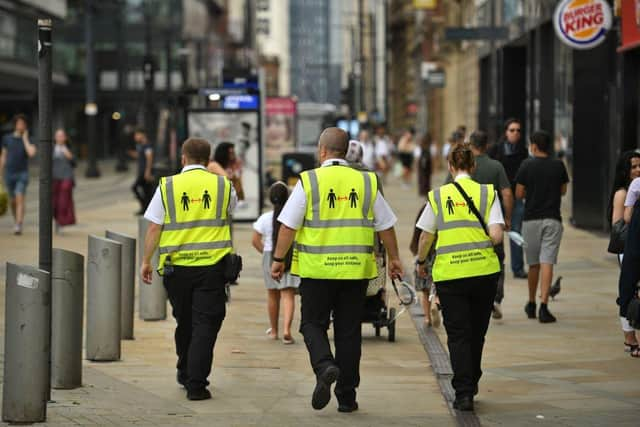Will there be more local lockdowns? Cities and towns in England where coronavirus cases are highest - and where rules have changed
This article contains affiliate links. We may earn a small commission on items purchased through this article, but that does not affect our editorial judgement.
Tougher lockdown restrictions have been enforced in parts of Northern England, following a recent spike of coronavirus cases in some areas.
The UK government announced the strict measures on 31 July, with the new rules affecting people who live in parts of Greater Manchester, East Lancashire and West Yorkshire.
Advertisement
Hide AdAdvertisement
Hide AdSimilar restrictions are already being enforced in Leicester as part of efforts to minimise the risk of any further spread of the virus.


But could other parts of the UK be at risk of a local lockdown? Here’s what you need to know.
Where have local lockdowns been enforced?
A local lockdown was enforced in Leicester in mid-June following a surge in coronavirus cases, which saw non-essential shops forced to close along with schools, except for vulnerable children and key workers.
All but essential travel to, from and within the city has also been discouraged and residents have been told to stay at home wherever possible.
Advertisement
Hide AdAdvertisement
Hide AdRestrictions for the Borough of Oadby and Wigston were lifted on 1 August, while businesses and venues can reopen in Leicester City from 3 August.
Lockdown rules were further eased on 19 August, allowing nail bars, beauty salons and tanning booths are allowed to reopen, while guidance informing outdoor music venues and theatres to stay closed has now been dropped. Spas, massage and tattoo parlours, along with body and skin piercing services, are also be permitted to resume business again.
In parts of Greater Manchester, East Lancashire and West Yorkshire, people are no longer allowed to meet with people who do not live in their household in a private home or garden, or in other indoor public venues, such as pubs, restaurants, cafes, shops and places or worship.
Preston was also be faced with tightened lockdown restrictions from 7 August, after 47 new cases were recorded in the space of a week. The new measures mean that different households are currently not allowed to meet indoors.
Could more local lockdowns be imposed?
Advertisement
Hide AdAdvertisement
Hide AdThe government has not confirmed any further local lockdowns will be enforced, although tougher restrictions could be imposed in areas that see a surge in coronavirus infections, as has been the case in parts of Northern England.
Prime Minister Boris Johnson recently expressed concerns of a second wave of coronavirus following the spike in infections in Spain, warning the UK could see a similar situation develop.
Read more:
Speaking during a visit to Nottingham on 28 July, Mr Johnson stressed that the most important thing is for people in all communities to “heed the advice” before restrictions can be eased across the country.
Advertisement
Hide AdAdvertisement
Hide AdHe said: “Clearly we now face, I’m afraid, the threat of a second wave in other parts of Europe and we just have to be vigilant and we have to be very mindful.”
The Prime Minister is also reportedly considering asking a greater number of people in England to take part in the shielding programme, should there be a spike in coronavirus cases.
This could see millions of people aged between 50 and 70 be told to stay at home in order to prevent a second nationwide lockdown.
A Sunday Times report said that people in this age group could be given personalised risk ratings, taking into account factors such as age and medical conditions.
Which areas have the highest infection rate?
Advertisement
Hide AdAdvertisement
Hide AdThe towns and cities in England with the current highest coronavirus infection rates have been named by Public Health England (PHE).
The figures are based on the seven days up to 15 August 2020, and are based on tests carried out in laboratories and in the wider community.
Northampton continues to have the highest infection rate in England, following an outbreak at the Greencore sandwich factory. The town recorded 279 new coronavirus cases in the seven days up to 15 August, which is the equivalent of 124.2 per 100,000 people. The increase marks a rise of 38.7 from the previous seven days.
Blackburn with Darwen remains one of the worst affected areas, with the rate rising from 68.1 to 86.2, and 129 new cases recorded.
Elsewhere, both Oldham in Greater Manchester and Leicester have both seen infection rates drop in the past week, suggesting the current local lockdown restrictions are helping to slow the spread.
